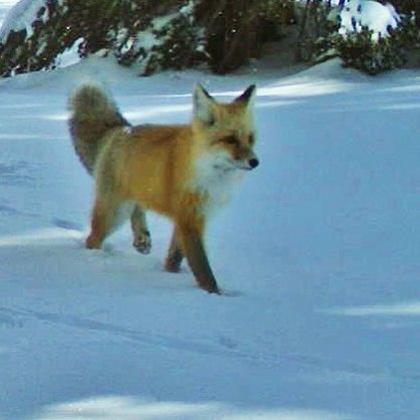 |
Oregon State study provides foundation for protecting rare fox in Cascades, Sierra Nevada |
CORVALLIS, Ore. – Conservation efforts for the rare Sierra Nevada red fox can be strengthened through new computer modeling based on a 12-year data gathering partnership led by scientists at Oregon State University’s Institute for Natural Resources, says a researcher who helped direct the project. |
 |
Breakthrough in computer chip energy efficiency could cut data center electricity use |
CORVALLIS, Ore. – Researchers at Oregon State University and Baylor University have made a breakthrough toward reducing the energy consumption of the photonic chips used in data centers and supercomputers. |
 |
Ship launch marks key milestone in OSU-led construction of new U.S. oceanographic research vessels |
The first of three new oceanographic research vessels dedicated to advancing marine science along U.S. coasts was successfully launched Thursday. |
 |
Oregon State University ranked in the top 1.4% of universities worldwide |
Oregon State ranked 90th in the nation and 273rd in the world |
 |
Oregon State researchers to study climate fluctuations in the ocean along Washington’s Olympic Coast |
A team of Oregon State University researchers is leading a three-year effort to learn more about climate fluctuations in Olympic Coast National Marine Sanctuary using more than 20 years of oceanographic data. |
 |
Public funding helped increase available child care slots in Oregon since 2020, OSU report finds |
Available child care slots for young children in Oregon grew by almost 5% from March 2020 to December 2022, thanks in part to increased public funding for child care, a new report from Oregon State University found. |
 |
Oregon State University to lead federal effort to advance semiconductor technologies in Northwest |
CORVALLIS, Ore. – Oregon State University will spearhead a $1 million National Science Foundation project to advance semiconductor technologies in the Pacific Northwest. |
 |
A jumping conclusion: Fossil insect ID’d as new genus, species of prodigious leaper, the froghopper |
A fossil arthropod entombed in 100-million-year-old Burmese amber has been identified as a new genus and species of froghopper, known today as an insect with prodigious leaping ability in adulthood following a nymphal stage spent covered in a frothy fluid. |
 |
Oregon State University leading $5M effort to accelerate robotics research via standardized robot |
CORVALLIS, Ore. – Researchers at Oregon State University are part of a $5 million National Science Foundation effort to accelerate robotics research by making standardized humanoid robots available to the scientific community. |
 |
Oregon State to co-lead $30 million USDA regional food business center |
Oregon State University has been selected to co-lead a $30 million U.S. Department of Agriculture regional food business center that will support farmers, ranchers and other food-related businesses to access new markets and navigate federal, state and local resources. |
 |
OSU-Cascades researcher explores AI solution for tracking and reducing household food waste |
BEND, Ore. – A researcher at Oregon State University-Cascades has received funding to develop a smart compost bin that tracks household food waste. |
 |
Mental imagery a helpful way to distract teens from negative thought patterns, OSU study finds |
For adolescents who may get stuck in negative thought spirals, refocusing on mental imagery is a more effective distraction than verbal thoughts, a recent study from Oregon State University found. |
 |
Fishermen-developed “banger bar” helps reduce risk of injury on crab boats, OSU study finds |
Dungeness crab fishermen are at high risk for on-the-job injury, but having a metal bar to bang crab pots against as they harvest can help them prevent injury, an Oregon State University study found. |
 |
Massive iceberg discharges during the last ice age had no impact on nearby Greenland, raising new questions about climate dynamics |
Greenland, in close proximity to the ice sheet, saw no changes during Heinrich events during the last ice age, while the events caused rapid warming in Antarctica, at the other end of the globe. |
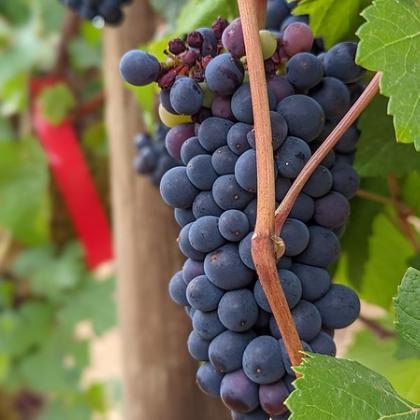 |
Oregon State researchers make breakthrough in understanding the chemistry of wildfire smoke in wine |
Oregon State University researchers have discovered a new class of compounds that contributes to the ashy or smokey flavors in wine made with grapes exposed to wildfire smoke. |
 |
Bees flock to clearcut areas but numbers decline as forest canopy regrows, OSU research shows |
Native bees in the Oregon Coast Range are diverse and abundant in clearcut areas within a few years of timber harvest but their numbers drop sharply as planted trees grow and the forest canopy closes, research by Oregon State University shows. |
 |
Oregon State researchers develop new model for quickly evaluating cervical cancer drugs |
CORVALLIS, Ore. – Researchers at Oregon State University have created a means of speeding up and improving the evaluation process for drugs used to combat cervical cancer. |
 |
Juvenile black rockfish affected by marine heat wave but not always for the worse, research shows |
CORVALLIS, Ore. – Larvae produced by black rockfish, a linchpin of the West Coast commercial fishing industry for the past eight decades, fared better during two recent years of unusually high ocean temperatures than had been feared, new research by Oregon State University shows. |
 |
With fewer salmon to eat, Southern Resident killer whales spend less time in the San Juan Islands |
As a key food supply declines, the endangered population of Southern Resident killer whales, known to frequent the Salish Sea off the coasts of Washington and British Columbia, is spending far less time in that region, a new study shows. |
 |
Woodpecker that likes burned forest can breed in unburned woods too, research shows |
CORVALLIS, Ore. – A species of woodpecker once thought to limit itself to recently burned areas can breed successfully in the unburned parts of fire-prone landscapes too, according to a study by Oregon State University scientists that holds key implications for improved conservation and forest management efforts. |
 |
Researchers develop electrolyte enabling high efficiency of safe, sustainable zinc batteries |
CORVALLIS, Ore. – Scientists led by an Oregon State University researcher have developed a new electrolyte that raises the efficiency of the zinc metal anode in zinc batteries to nearly 100%, a breakthrough on the way to an alternative to lithium-ion batteries for large-scale energy storage. |
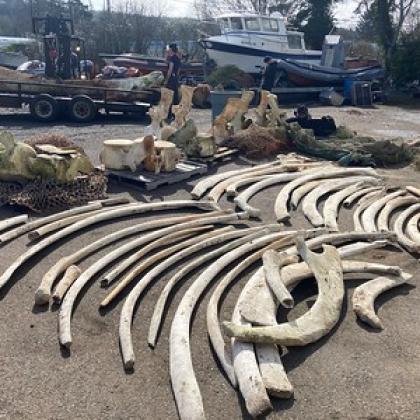 |
Rare blue whale skeleton heads to Canada for final cleaning and preservation so it can go on display in Newport |
The skeleton of a rare 70-foot blue whale that washed up on the Oregon coast several years ago will journey to Alberta, Canada later this week so a team of preservation and restoration specialists can prepare it for public display at Oregon State University’s Hatfield Marine Science Center in Newport. |
 |
OSU researchers create artificial enzyme for fast detection of disease-related hormone in sweat |
CORVALLIS, Ore. – Researchers in the Oregon State University College of Engineering have developed a handheld sensor that tests perspiration for cortisol and provides results in eight minutes, a key advance in monitoring a hormone whose levels are a marker for many illnesses including various cancers. |
 |
Oregon State researchers begin to unravel whale entanglement risk factors off Oregon Coast |
New research by an Oregon State University-led team is beginning to unravel the times of year and locations where whales are at greatest danger of entanglement in fishing gear on the Oregon Coast. |
 |
Surprising role of plankton in buffering climate change topic of Oregon State Science Pub talk April 5 |
The surprising role that invisible single-celled microbes play in buffering climate change impacts in ocean waters will be the topic of Oregon State University's Science Pub event at 6 p.m. April 5. |
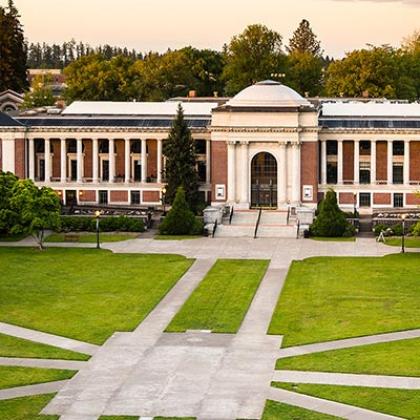 |
Oregon State University names two distinguished professors |
Oregon State University has named Emily Ho and Yanyun Zhao as its 2023 University Distinguished Professor recipients, the highest academic honor the university bestows on faculty. |
 |
Oregon State names dean of College of Earth, Ocean, and Atmospheric Sciences |
Tuba Özkan-Haller, an Oregon State University professor, noted international oceanography researcher, and leader of university research initiatives and diversity, equity and inclusion actions, has been named dean of the university’s College of Earth, Ocean, and Atmospheric Sciences. |
 |
To help Oregon’s dry forests, fire needs to be just the right intensity, and happen more than once |
Oregon State University research into the ability of a wildfire to improve the health of a forest uncovered a Goldilocks effect – unless a blaze falls in a narrow severity range, neither too hot nor too cold, it isn’t very good at helping forest landscapes return to their historical, more fire-tolerant conditions. |
 |
Opioid overdose risk 10 times greater for those recently released from prison, research shows |
People recently released from prison in Oregon face a risk for opioid overdose 10 times greater than the general public, according to a new study led by an Oregon State University College of Pharmacy scientist. |
 |
Oregon State gets grant to explore carbon sequestration in 3D-printed building materials |
CORVALLIS, Ore. – Oregon State University and Sandia National Laboratory have received a three-year, $540,000 grant from the U.S. Department of Energy to explore capturing carbon dioxide from industrial emissions and sequestering it in a mineralized form in 3D-printed building materials. |
 |
Oregon State develops catalyst that purifies herbicide-tainted water and produces hydrogen |
CORVALLIS, Ore. – Researchers in the Oregon State University College of Science have developed a dual-purpose catalyst that purifies herbicide-tainted water while also producing hydrogen. |
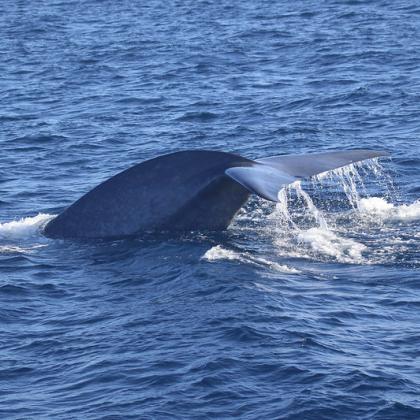 |
Blue whale foraging and reproduction are related to environmental conditions, study shows |
A new study of New Zealand blue whales’ vocalizations indicates the whales are present year-round in the South Taranaki Bight and their behavior is influenced by environmental conditions in the region. |
 |
As sea ice declines in the Arctic, bowhead whales are adjusting their migration patterns |
As sea ice declines in the Arctic, bowhead whales are staying north of the Bering Strait more frequently, a shift that could affect the long-term health of the bowhead population and impact the Indigenous communities that rely on the whales, a new study by Oregon State University researchers shows. |
 |
Sea stars able to consume kelp-eating urchins fast enough to protect kelp forests, research shows |
CORVALLIS, Ore. – A research team including a scientist from Oregon State University has provided the first experimental evidence that a species of endangered sea star protects kelp forests along North America’s Pacific Coast by preying on substantial numbers of kelp-eating urchins. |
 |
Feedback loops make climate action even more urgent, scientists say |
CORVALLIS, Ore. – An international collaboration led by Oregon State University scientists has identified 26 global warming accelerators known as amplifying feedback loops that the researchers say aren’t being properly included in climate models. |
 |
Oregon State opens applications for new polar science experience program for educators |
The application period will open Feb. 20 for the first round of research experiences for educators through Polar STEAM, a new Oregon State University-led program to promote the importance of research in the Arctic and Antarctic through education and the arts. |
 |
Moisture the key to soils’ ability to sequester carbon, Oregon State research shows |
CORVALLIS, Ore. – Soil is the Earth’s second-biggest carbon storage locker after the ocean, and a research collaboration has shown that it’s moisture, not temperature or mineral content, that’s the key to how well the soil carbon warehouse works. |
 |
Changing climate conditions likely facilitated early human migration to the Americas at key intervals, research suggests |
Researchers have pinpointed two intervals when ice and ocean conditions would have been favorable to support early human migration from Asia to North America late in the last ice age, a new paper published today in the Proceedings of the National Academy of Sciences shows. |
 |
Pacific Northwest heat dome tree damage more about temperature than drought, scientists say |
Widespread tree scorch in the Pacific Northwest that became visible shortly after multiple days of record-setting, triple-digit temperatures in June 2021 was more attributable to heat than to drought conditions, Oregon State University researchers say. |
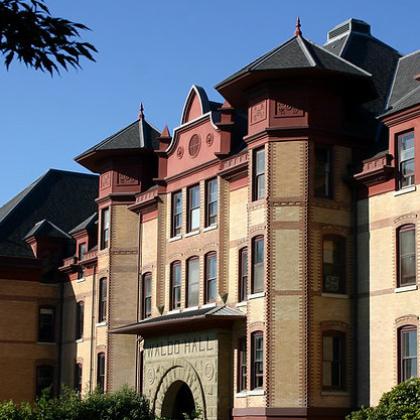 |
OSU report illustrates severe crisis among Oregon health care workforce |
Oregon needs to improve the supply and distribution of health care providers, enhance the resiliency and well-being of health care workers and increase diversity among the health care workforce to provide more culturally and linguistically responsive care, a new report by Oregon State University researchers found. |
 |
Looking beyond microplastics, Oregon State researchers find that cotton and synthetic microfibers impact behavior and growth of aquatic organisms |
While microplastics have received significant attention in recent years for their negative environmental impacts, a new study from Oregon State University scientists found microfibers from synthetic materials as well as cotton impacted the behavior and growth of water organisms. |
 |
Far-off storms fuel sneaker waves along Pacific Northwest coast, new research suggests |
Sneaker waves are likely fueled by a specific type of wave condition generated by far-off storms and paired with just the right conditions closer to shore, a new study by Oregon State University researchers has found. |
 |
GPS tracking, simulations show optimal locations to help desert bighorn sheep cross freeways |
Desert bighorn sheep whose Southern California range is bisected by freeways may one day benefit from Oregon State University modeling designed to show where the animals would be most apt to use overpasses to safely cross the interstates. |
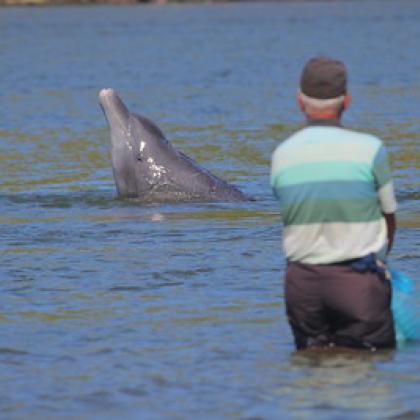 |
Fishing in synchrony brings mutual benefits for dolphins and people in Brazil, research shows |
By working together, dolphins and net-casting fishers in Brazil each catch more fish, a rare example of an interaction by two top predators that is beneficial to both parties, researchers have concluded following 15 years of study of the practice. |
 |
Incorporating mindfulness into social justice classes topic of Feb. 8 Oregon State Science Pub |
Incorporating mindfulness into the curriculum of undergraduate social justice courses will be the topic of Oregon State University's Science Pub event at 6 p.m. Feb. 8. |
 |
Physical education requirements continue to decline at colleges and universities, OSU study finds |
A new study from Oregon State University found that about 32% of colleges and universities in the U.S. require some form of physical education course to graduate, down from 39% as observed in an OSU study from 2010. |
 |
Wolves eliminate deer on Alaskan Island then quickly shift to eating sea otters, research finds |
Wolves on an Alaskan island caused a deer population to plummet and switched to primarily eating sea otters in just a few years, a finding scientists at Oregon State University and the Alaska Department of Fish and Game believe is the first case of sea otters becoming the primary food source for a land-based predator. |
 |
OSU-led wave energy testing facility reaches key construction milestones |
The last major pieces of the contract to build the wave energy test facility PacWave South have been executed, paving the way for the completion of the Oregon State University-led facility off the coast of Newport. |
 |
Homeowners’ cultural traits should be considered when promoting wildfire mitigation efforts, OSU study finds |
People’s cultural worldviews play a part in how they respond to wildfire risk, and should be taken into account in efforts to get homeowners to engage in pre-fire mitigation efforts such as adjusting landscaping and preparing an evacuation plan, an Oregon State University study found. |
 |
Forest landslides’ frequency, size influenced more by road building, logging than heavy rain |
A long-term Pacific Northwest study of landslides, clear-cutting timber and building roads shows that a forest’s management history has a greater impact on how often landslides occur and how severe they are compared to how much water is coursing through a watershed. |
 |
As climate warms, drier air likely to be more stressful than less rainfall for Douglas-fir trees |
CORVALLIS, Ore. – Douglas-fir trees will likely experience more stress from drier air as the climate changes than they will from less rain, computer modeling by Oregon State University scientists shows. |
 |
Oregon State University researchers take key step toward new treatment for hereditary blindness |
PORTLAND, Ore. – Oregon State University College of Pharmacy scientists have demonstrated in animal models the possibility of using lipid nanoparticles and messenger RNA, the technology underpinning COVID-19 vaccines, to treat blindness associated with a rare genetic condition. |
 |
Award stickers and taste descriptions matter for artisanal cheese buyers, Oregon State research shows |
Consumers are willing to pay more for familiar, versus unfamiliar, varieties of cheese if there is a sticker on the cheese indicating it won an award or if sensory information about the cheese – such as a description of its taste or food pairing suggestions – is included, a new study from Oregon State University shows. |
 |
Oregon faces sustained and novel risks and opportunities as climate changes, new assessment shows |
Oregon continues to face new and enduring hazards related to climate change, but opportunities for adaptation and mitigation are also expanding, the latest assessment released today by the Oregon Climate Change Research Institute indicates. |
 |
Oregon State archaeologists uncover oldest known projectile points in the Americas |
Oregon State University archaeologists have uncovered projectile points in Idaho that are thousands of years older than any previously found in the Americas, helping to fill in the history of how early humans crafted and used stone weapons. |
 |
Two anticonvulsants prescribed for pain only ‘modestly effective’ and not without risk, study shows |
PORTLAND, Oregon – A study by Oregon State University College of Pharmacy researchers suggests that two anticonvulsants often prescribed for chronic pain are only “modestly effective” at pain management and can create an unfavorable risk/reward situation for patients. |
 |
Oregon State researchers find lack of diverse representation in psychophysiology study participants |
A new study from Oregon State University found that psychophysiology studies show a significant lack of diversity among their participants, making their results less applicable across different communities and cultures. |
 |
OSU study finds need for better awareness around timing of electricity usage among customers |
A new study published in Nature Energy found that electricity customers often lack awareness of their daily energy-use patterns at home, which could have a serious financial impact as utility companies move toward time-of-use energy pricing models. |
 |
Oregon State amber researcher finds new species of cockroach, first fossilized roach sperm |
CORVALLIS, Ore. – The cockroach, reviled around the world for its sickness-causing potential and general creepiness, now occupies an important position in the study of amber fossils thanks to research by an Oregon State University scientist. |
 |
New analysis of cellular ‘vehicles’ drives a deeper understanding of ALS, Alzheimer’s |
CORVALLIS, Ore. – Oregon State University scientists have taken a key step toward better understanding neurodegenerative diseases by using a suite of biophysical techniques to learn more about a motor protein whose malfunction is associated with many disorders.
|
 |
Oregon State researchers take key step toward improving lives of people with epilepsy |
CORVALLIS, Ore. – Researchers in the Oregon State University College of Engineering have taken a key step toward improving the lives of patients with epilepsy by developing a sensor system for quickly testing their saliva to see if they have the correct level of anti-epileptic medicine in their system. |
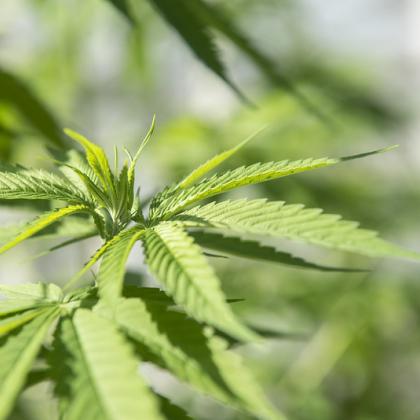 |
Hemp as treatment for COVID-19 topic of Dec. 6 Oregon State Science Pub talk |
Using natural products such as hemp to treat COVID-19 will be the topic of Oregon State University's Science Pub event at 6 p.m. Dec. 6. |
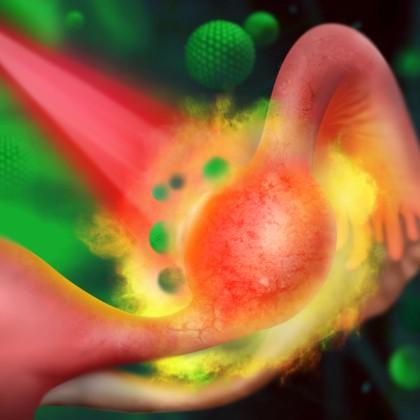 |
Oregon State researchers move closer to better care for life-threatening pregnancy condition |
PORTLAND, Ore. – Oregon State University scientists have produced a proof of concept for a new and better way of caring for women facing the life-threatening situation of ectopic pregnancy, which occurs when a fertilized egg implants somewhere other than the lining of the uterus. |
 |
‘Bike boxes’ can improve urban intersections for cyclists, Oregon State research shows |
CORVALLIS, Ore. – A roadway setup known as the “bike box,” a painted-off area for bicyclists at the front of an intersection, can help them stay safe at urban, signalized intersections, research by the Oregon State University College of Engineering indicates. |
 |
Oregon State researchers develop new, heat-efficient nanoparticles for treating cancer |
PORTLAND, Ore. – Oregon State University scientists have invented a way to make magnetic nanoparticles that get hotter than any previous nanoparticle, improving their cancer fighting ability. |
 |
Largest known manta ray population is thriving off the coast of Ecuador, new research shows |
Scientists have identified off the coast of Ecuador a distinct population of oceanic manta rays that is more than 10 times larger than any other known subpopulation of the species. |
 |
Oregon State receives $3M from U.S. Dept. of Energy to explore a more sustainable battery |
The U.S. Department of Energy has awarded $3 million to an Oregon State University researcher to lead the development of a new, high-energy-density battery that does not rely on rare elements. |
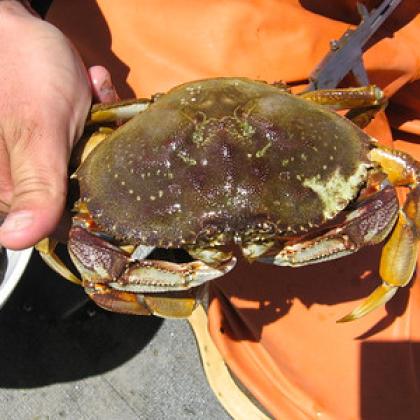 |
Oregon State and partners to receive $4.2 million to study stressors facing Dungeness crab, other marine life under climate change |
The National Oceanic and Atmospheric Administration has awarded Oregon State University and its research partners $4.2 million to investigate how multiple climate change-related stressors are impacting marine ecosystems off the coast of Oregon, Washington and Northern California. |
 |
Volcanic activity and low ocean oxygen events linked to climate warming and rapid ice melt during last ice age, study finds |
A chemical analysis of sediment cores from the North Pacific Ocean show a consistent pairing of volcanic ash and hypoxia, a low ocean oxygen interval spanning thousands of years, during times of rapid climate warming at the end of the last ice age, new research shows. |
 |
Proximity to heavy traffic congestion linked to lower infant birthweight, OSU study finds |
An Oregon State University study published Friday found that traffic congestion is linked to decreased birthweight for full-term babies born to parents living near areas of heavy traffic, such as highways and freeways. |
 |
Oregon State researchers take key step toward improving treatment of cystic fibrosis |
PORTLAND, Oregon – Researchers at Oregon State University and Oregon Health & Science University have taken a key step toward improving and lengthening the lives of cystic fibrosis patients, who experience chronically clogged airways and a dramatically shortened life expectancy. |
 |
Report by OSU, international scientists says Earth is ‘unequivocally’ in midst of climate emergency |
CORVALLIS, Ore. – An international coalition of researchers says in a report published today that the Earth’s vital signs have worsened to the point that “humanity is unequivocally facing a climate emergency.” |
 |
Light-analyzing ‘lab on a chip’ opens door to widespread use of portable spectrometers |
CORVALLIS, Ore. – Scientists including an Oregon State University materials researcher have developed a better tool to measure light, contributing to a field known as optical spectrometry in a way that could improve everything from smartphone cameras to environmental monitoring. |
 |
Nanotechnology, messenger RNA combined in possible new ‘universal’ COVID-19 treatment |
PORTLAND, Ore. – A study led by an Oregon State University pharmaceutical sciences researcher has produced a proof of principle for a new “universal” means of treating COVID-19. |
 |
Oregon State University announces second campaign with $1 billion already given toward $1.75 billion goal |
Oregon State University and the OSU Foundation on Friday launched Oregon State’s second university-wide fundraising campaign, Believe It: The Campaign for Oregon State University. |
 |
Oregon State, U.S. Dept. of Energy researchers take key step toward big gains in plastics recycling |
CORVALLIS, Ore. – Researchers including an Oregon State University College of Engineering faculty member have taken a key step toward greatly expanding the range of plastics that can be recycled. |
 |
Research on how cells respond to stimuli offers insight into disease mechanisms, treatment |
CORVALLIS, Ore. – Oregon State University scientists are decoding how cells communicate and collectively respond to chemical stimuli in the extracellular environment, knowledge that’s critical to understanding physiological processes and blocking disease mechanisms. |
 |
Pet parenting style influences dog behavior, Oregon State University finds |
Dogs with owners who have high expectations and are highly responsive to their dog’s behavior and needs are more social, more secure when away from their owners and more persistent problem solvers, an Oregon State University study found. |
 |
Proactive responses are most effective for fighting marine disease, Oregon State research shows |
CORVALLIS, Ore. – The best time to deal with diseases in marine species is before an outbreak occurs, a study by Oregon State University shows. |
 |
Construction starts on Oregon State agrivoltaics farm that will merge agriculture and solar energy |
Construction is underway on a $1.5 million project that will allow Oregon State University researchers to further optimize agrivoltaic systems that involve co-developing land for both solar photovoltaic power and agriculture. |
 |
Warmer stream temperatures in burned-over Oregon watershed didn’t result in fewer trout |
CORVALLIS, Ore. – The number of trout in a southern Oregon stream system showed no decline one year after a fire burned almost the entire watershed, including riparian zone trees that had helped maintain optimal stream temperatures for the cold-water fish. |
 |
Long-term tracking of whale feeding behavior via satellite now possible with new tag |
Oregon State University researchers have developed a new satellite tag that allows them to better track whales’ behavior, including previously unobservable feeding events during dives. |
 |
OSU study finds higher rates of traumatic injuries for outdoor workers during hotter weather |
Rates of traumatic injury among workers in the Oregon agricultural and construction sectors are significantly higher during periods of high heat compared with periods of more moderate weather, a recent Oregon State University study found. |
 |
Cystic fibrosis patients can benefit from vitamin supplements, Oregon State research shows |
CORVALLIS, Ore. – Cystic fibrosis patients who supplement their diet with vitamin C can also derive greater benefit from another antioxidant, vitamin E, resulting in a reduction in damaging inflammation, a study led by Oregon State University suggests. |
 |
Cattle grazing with virtual fencing shows potential to create wildfire fuel breaks, study finds |
The use of virtual fencing to manage cattle grazing on sagebrush rangelands has the potential to create fuel breaks needed to help fight wildfires, a recent Oregon State University and U.S. Department of Agriculture-Agricultural Research Service study found. |
 |
Bipedal robot developed at Oregon State achieves Guinness World Record in 100 meters |
CORVALLIS, Ore. – Cassie the robot, invented at the Oregon State University College of Engineering and produced by OSU spinout company Agility Robotics, has established a Guinness World Record for the fastest 100 meters by a bipedal robot. |
 |
OSU research discovers probiotic combination drastically improves oyster larvae survival |
Oyster larvae survival rates were significantly boosted by treating them with specific combinations of probiotics, Oregon State University researchers found in a recent study. |
 |
Hemp byproducts are good alternative feed for lambs, Oregon State study finds |
An Oregon State University study found that spent hemp biomass – the main byproduct of the cannabinoid (CBD) extraction process of hemp – can be included in lamb diets without any major detrimental effects to the health of the animals or their meat quality. |
 |
Oregon State researchers, veterans’ home explore ways to enhance residents’ health with robots |
CORVALLIS, Ore. – Oregon State University researchers are partnering with the Edward C. Allworth Veterans’ Home in Lebanon, Oregon, on a federally funded project to see if robots can improve residents’ health and wellness by engaging them in physical and mental exercise. |
 |
Genetically modified yeast yields intense hop aromas in beer, Oregon State research finds |
Oregon State University brewing researchers and a team of bioengineers have shown that a genetically modified yeast strain can alter the fermentation process to create beers with significantly more pronounced hop aromas. |
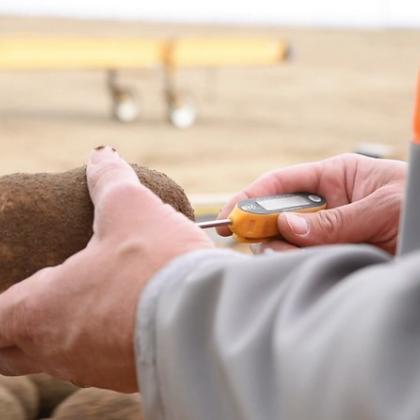 |
Oregon State and partners will receive $50 million grant to develop climate-smart potatoes |
Oregon State University has been awarded a $50 million grant from the U.S. Department of Agriculture to work with farmers and Native American Tribes on cropping practices that can enhance soil health and reduce the carbon footprint of the Pacific Northwest potato industry. |
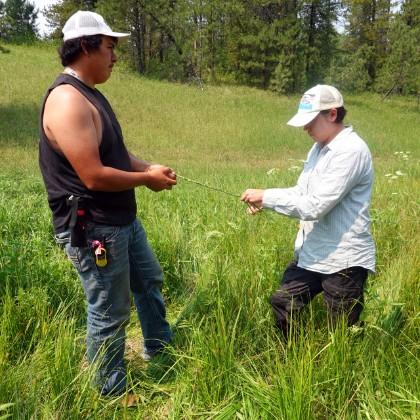 |
OSU College of Forestry, Pacific Northwest Tribes team up on $5 million forest restoration project |
CORVALLIS, Ore. – Faculty in the Oregon State University College of Forestry will team up with Pacific Northwest Tribal nations on a three-year forest restoration effort whose goal is to improve the resilience of the region’s woodlands to climate change through Traditional Ecological Knowledge. |
 |
Sperm whales use distinct vocalizations to identify different whale clans, new research finds |
Sperm whales in the Pacific Ocean make distinct vocalizations that help them identify whales in different clans, a new study from a team including an Oregon State University researcher found. |
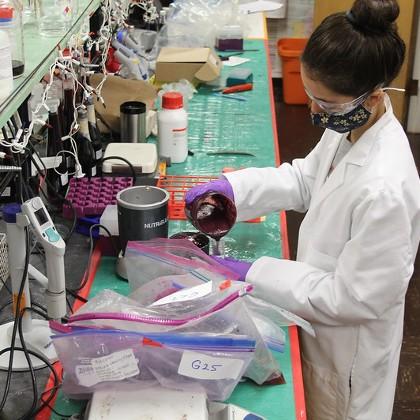 |
Oregon State University sets record for annual research funding with awards totaling more than $471 million |
CORVALLIS, Ore. – Research funding at Oregon State University increased by greater than 22% in the last fiscal year to more than $471 million, a university record. |
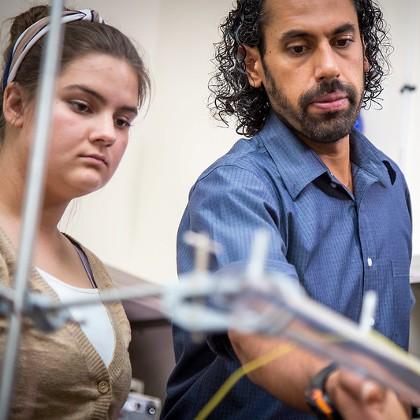 |
OSU-Cascades research and sponsored activities attract more than $5.7 million |
BEND, Ore. – Research and other grant funding at Oregon State University – Cascades reached more than $5.7 million during the past fiscal year ending on June 30, a record for the Bend campus. |
 |
Oregon State researchers develop messenger RNA therapy for ovarian cancer, muscle wasting |
PORTLAND, Ore. – Researchers at Oregon State University and Oregon Health & Science University have developed a promising, first-of-its-kind messenger RNA therapy for ovarian cancer as well as cachexia, a muscle-wasting condition associated with cancer and other chronic illnesses.
|
 |
Jayathi Murthy assumes presidency of Oregon State University |
Jayathi Y. Murthy, a national leader in higher education engineering teaching, research and service, and advancing diversity, equity and inclusion, on Friday Sept. 9, officially began her service as Oregon State University’s 16th president. |
 |
Forests’ carbon uptake will be compromised by climate change, leaf temperature study suggests |
CORVALLIS, Ore. – A new study led by Oregon State University suggests leaves in forest canopies are not able to cool themselves below the surrounding air temperature, likely meaning trees’ ability to avoid damaging temperature increases, and to pull carbon from the atmosphere, will be compromised in a warmer, drier climate. |
 |
Characteristics of older forests can buffer effects of climate change for some bird species |
CORVALLIS, Ore. – Old-growth forests and managed forests with old-growth characteristics can provide relief from climate change for some bird species, research by the Oregon State University College of Forestry suggests. |
 |
NSF grant to OSU researchers will aid development of antibody treatment for dogs with cancer |
Researchers at Oregon State University’s Carlson College of Veterinary Medicine are moving forward with developing a specialized antibody treatment for dogs with cancer, thanks to a recent grant from the National Science Foundation. |